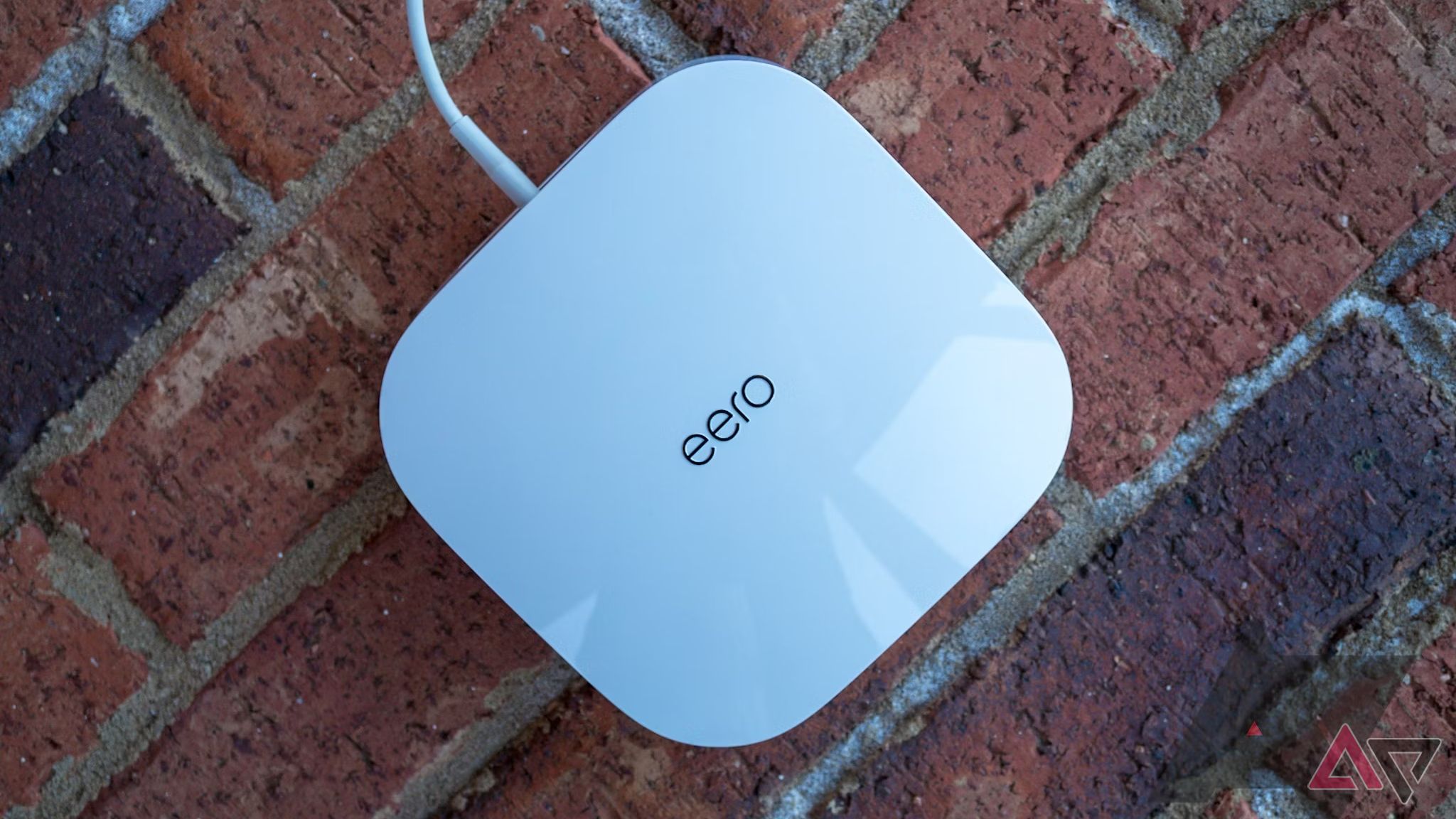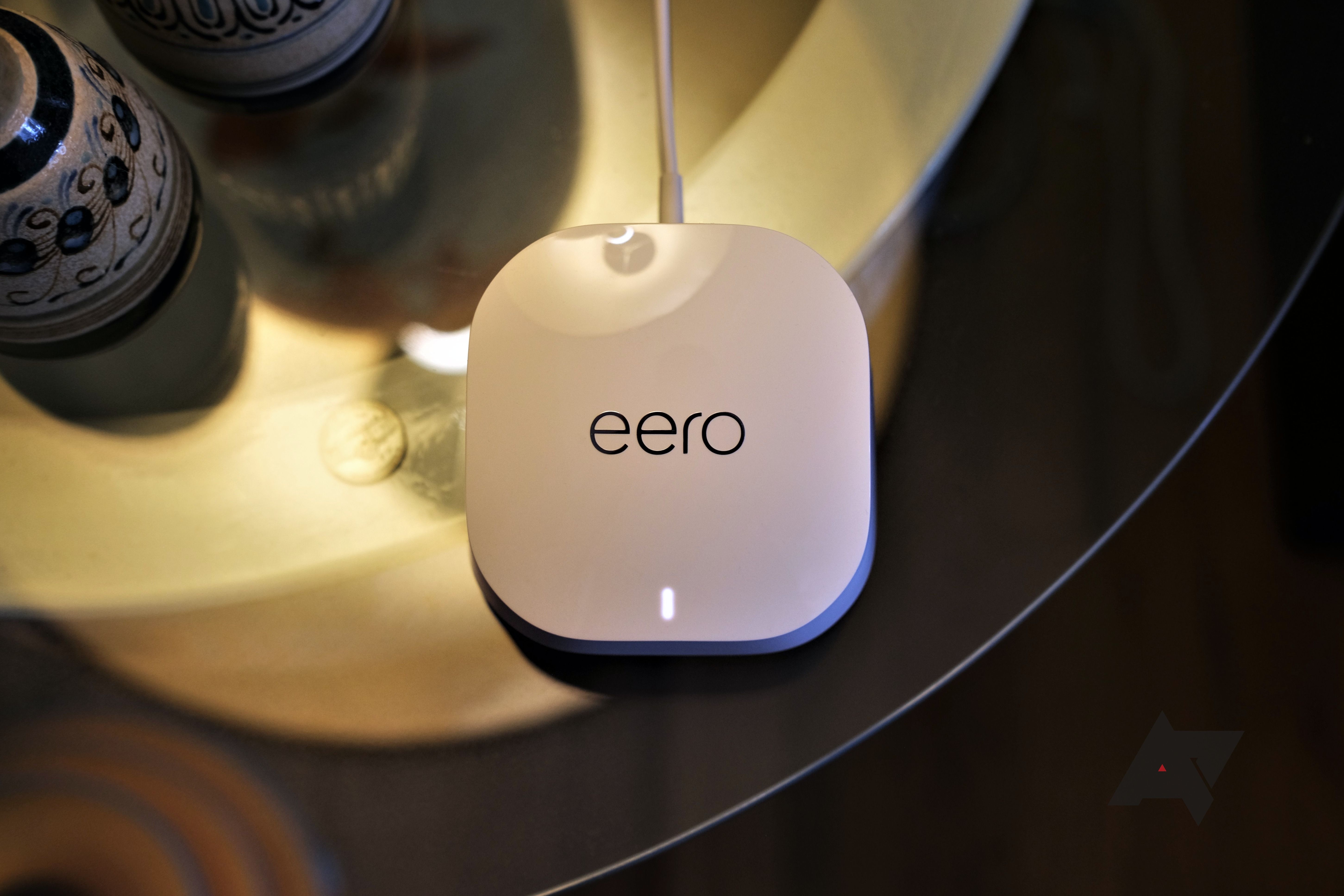The generational upgrade to Wi-Fi 6 brought along some significant upgrades to throughput over the same pair of 2.4GHz and 5GHz bands. It also made the multi-device handling a tad more efficient both on the router’s and the client devices’ ends. If you are in the market right now, chances are high that you will come across many routers that meet the Wi-Fi 6 standard — it’s becoming ubiquitous these days, so it makes little sense to settle for an older Wi-Fi 5 router in 2024, and newer Wi-Fi 7 routers are still expensive. For now, Wi-Fi 6 is the sweet spot.
Moreover, these modern routers are better equipped to handle our ever-growing smart home setups, where having dozens of connected devices isn’t uncommon anymore. And with high bandwidth use cases like virtual office meetings and 4K (or even 8K!) video streaming, the router should be able to intelligently allocate network resources to the client devices that need them the most. The recommendation on our list of some of the best Wi-Fi 6 routers can do all that and more without being heavy on your wallet — but if you want to splurge on absolutely the greatest router ever, we’ve got you covered, too!
Top Wi-Fi 6 routers for upgrading your home network
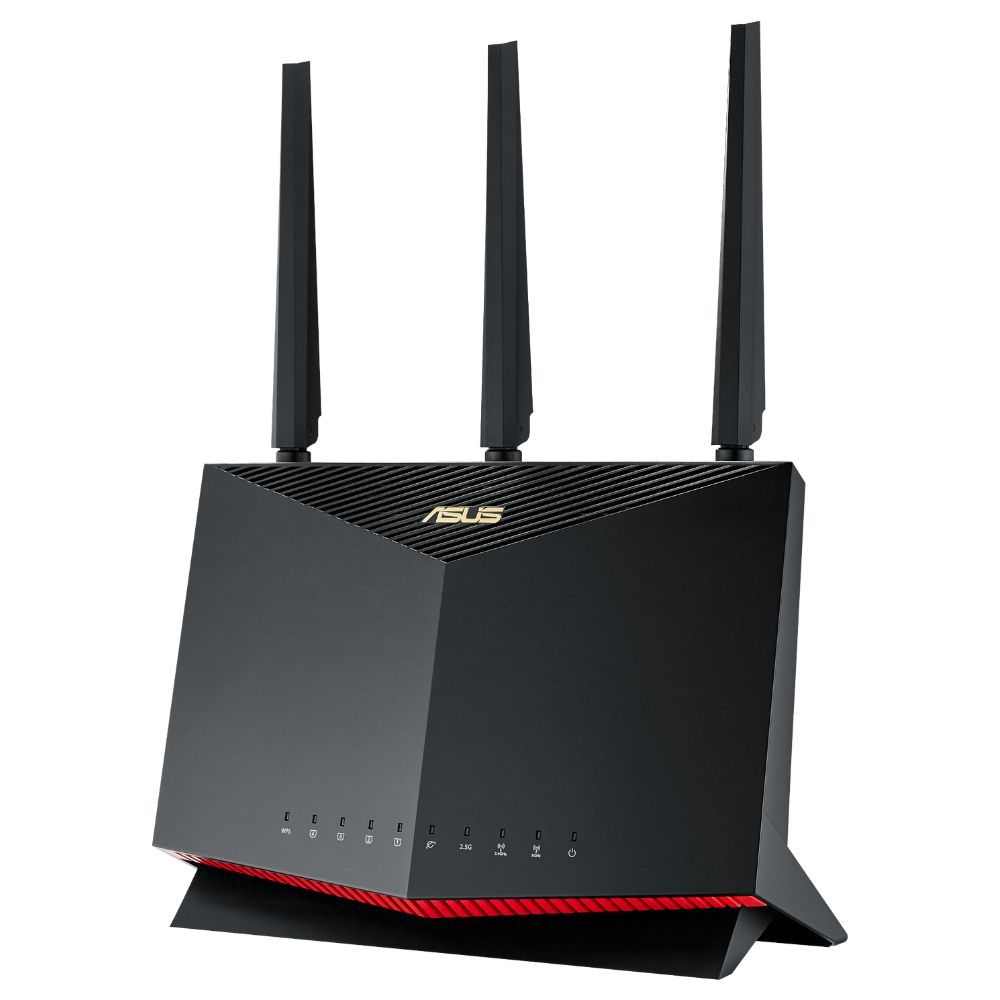
Asus RT-AX86U Pro
The right router for your gigabit connection
The Pro upgrade for Asus’s popular RT-AX86U comes with all the bells and whistles you can ask for from a modern router and then some. It can easily handle your gigabit internet connections, and Asus bundles its security suite with the router without any extra monthly fee.
- Comes with an upgraded processor
- Offers a 2.5GbE LAN port
- AiProtection Pro is bundled for free
- Slightly pricey for a standalone router
The most notable upgrade on the Asus RT-AX86U Pro has to be its processor. It’s a new quad-core unit that runs at 2GHz and is paired with 1GB of RAM. This extra horsepower allows it to better support your entire smart home setup, efficiently handle your QoS rules, and even run VPN natively on the router, saving you from setting up VPN individually on all your devices.
Its three high-gain external antennae can cover a medium to large home without dropping signals at the outer edges. But Asus lets you extend its range even more with an AiMesh-compatible extender for a rock-solid connection even in your backyard. And in case you want to have a wired connection to your gaming console, you will find the included 2.5GbE port on the router’s back handy. Being a gaming router, additional features are included, such as setting up gaming profiles and prioritizing mobile gaming to give you an edge in multiplayer games.
In terms of other modern features, you get the whole package — OFDMA, Beamforming, MU-MIMO, and 160MHz wide channel — you name it! Plus, you won’t have to spend a dime extra as the Asus RT-AX86U Pro comes bundled with AiProtection Pro without any monthly subscription.
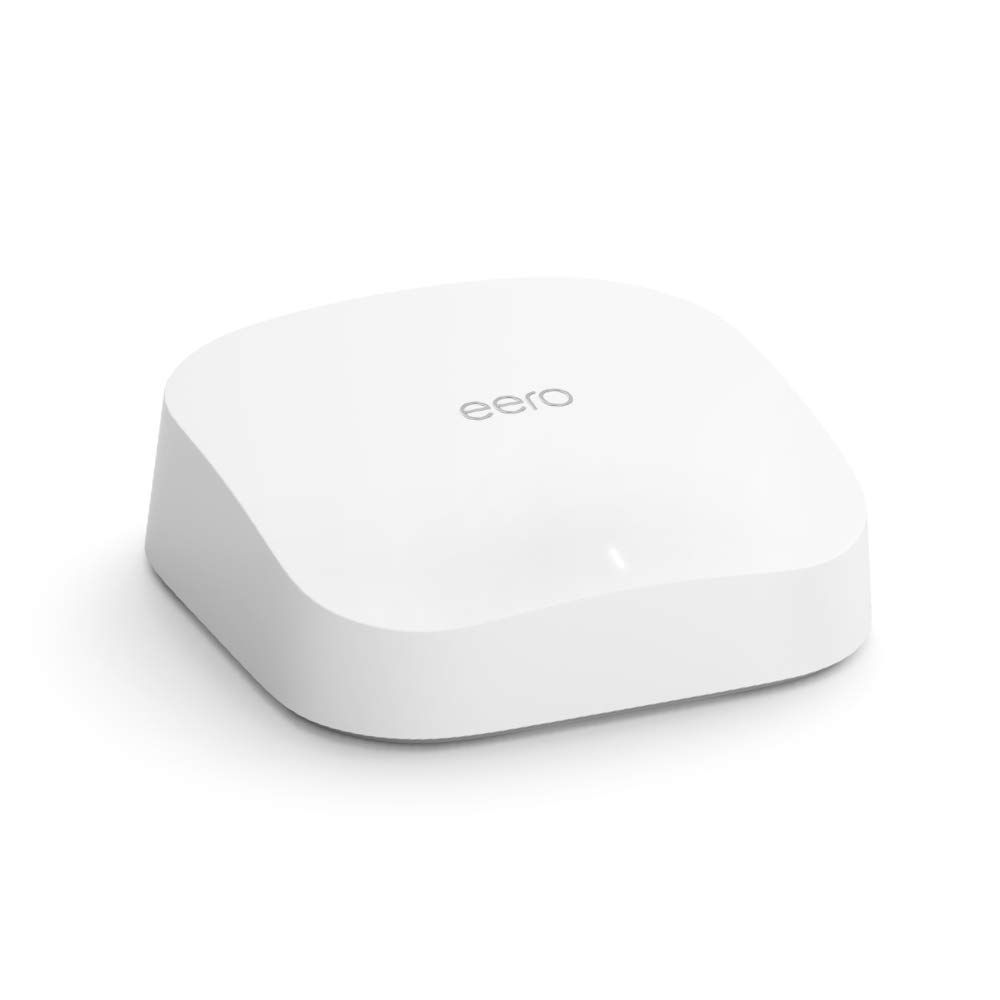
Amazon Eero Pro 6
Fix spotty network in your multi-storied home
Bring home the Amazon Eero Pro 6 — a true mesh system that fixes your spotty home network. This router system is easy to set up, works well with the Alexa ecosystem, and has Zigbee built-in for controlling your smart home devices without requiring a dedicated hub.
- Zigbee built-in
- Tri-band mesh and other high-end features
- App is easy to use and feature-rich
- Some essential features need a monthly subscription
- Not cheap
Giving you the benefit of a whole-home Wi-Fi network, Amazon’s high-end Eero Pro 6 can cover up to 6,000 square feet with its 3-pack option, but if you don’t need that much coverage, there’s a 2-pack option, too. This Pro model has a slimmer profile than its non-Pro alternative and comes in a pretty discreet design that you don’t have to hide.
The Eero Pro 6 is a tri-band system, which means it has a dedicated 5GHz band for backhaul to talk to other Eero nodes in your house without eating up the bandwidth; it’s among the cheaper routers to offer this feature. Plus, each unit (the main router and satellite nodes) has Zigbee built-in, which lets you connect your smart home devices without needing additional hubs.
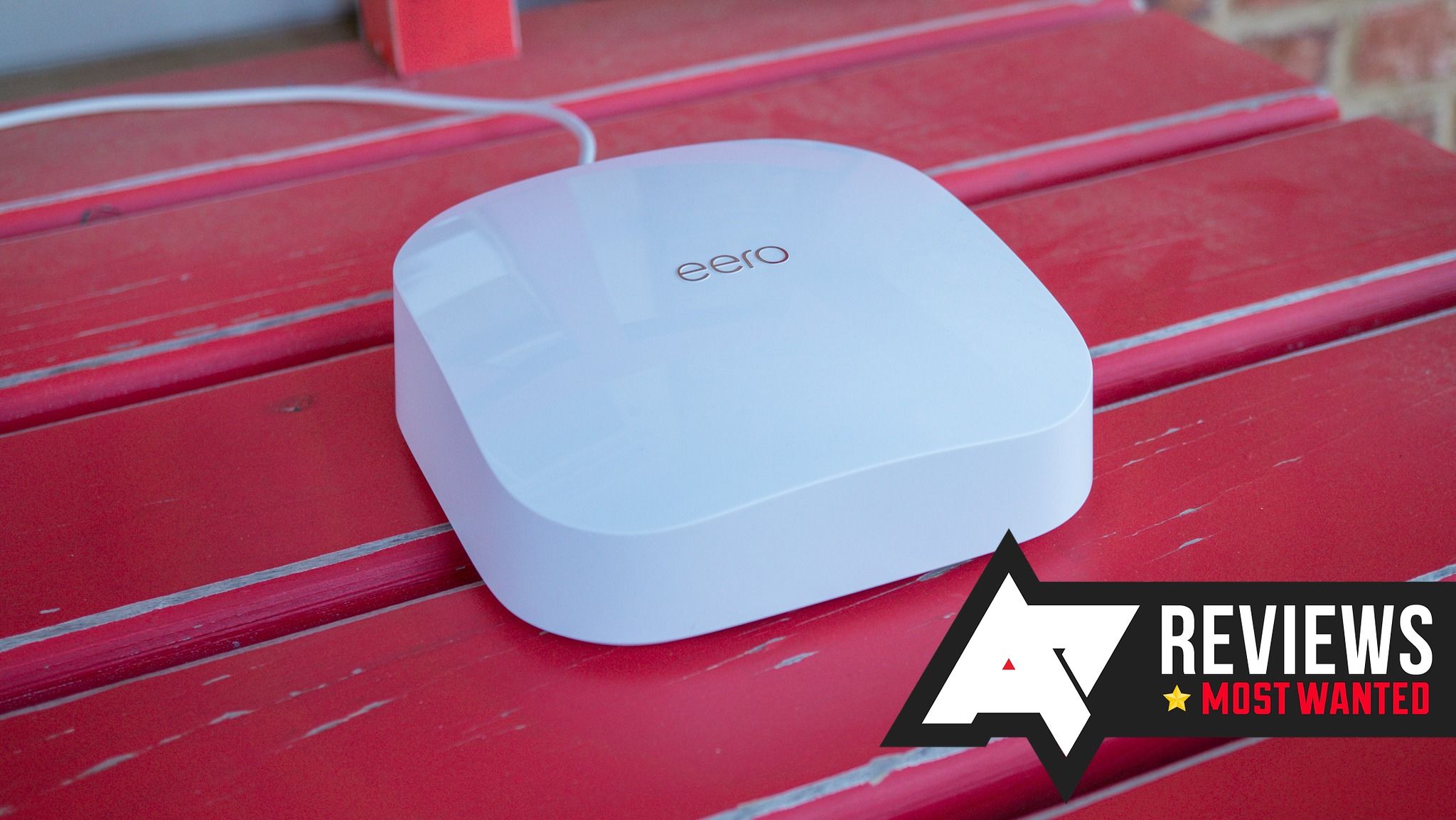
Eero Pro 6 review, one month later: The solution to all your Wi-Fi problems
Amazon's latest high-end mesh system is a force to be reckoned with
As we mentioned in our Eero Pro 6 review, the router was easy to set up and use, with excellent network performance in terms of coverage and throughput. Everything you need is available in the easy-to-navigate companion app (there’s no web interface). However, certain features like parental controls and detailed insights are behind the paywall, and you must cough up $3 or $10 every month to access those features, depending on the package you pick.
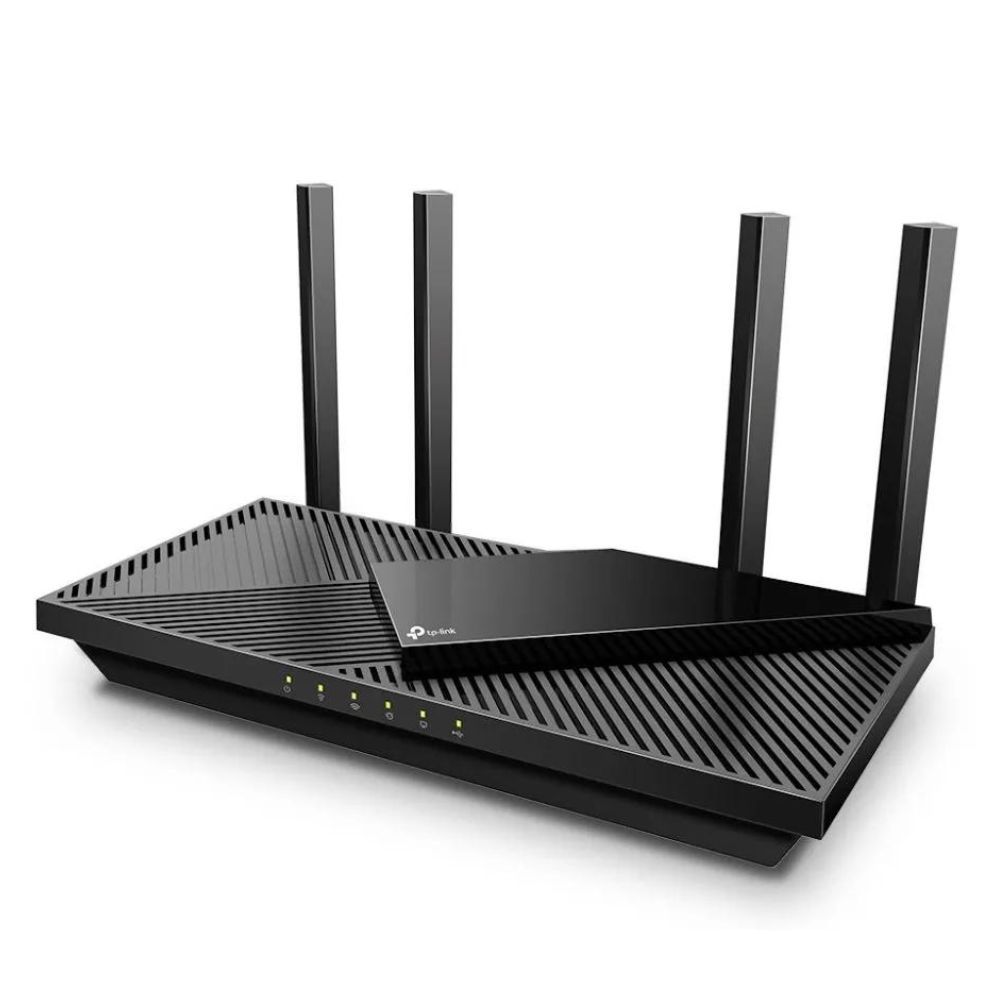
TP-Link Archer AX55
Best bang for your buck Wi-Fi 6 router
With the TP-Link Archer AX55, you can give your home a much-needed Wi-Fi 6 upgrade without going over budget. Despite its affordable price, this router is packed with smart features that you may typically find on pricier models, and it doesn’t compromise on full-house coverage either.
- Improved and more stable signal performance
- Excellent value for your money
- Plenty of smarts with HomeShield, OneMesh, and Alexa
- No link aggregation and MU-MIMO
- HomeShield requires you to pay a monthly fee
When it comes to affordable routers, TP-Link’s budget Archer AX series offers the best value for your money. The TP-Link Archer AX55 is a recent addition to the company’s affordable lineup and includes many smart features that you expect from a modern router without breaking the bank. While the Archer AX55 looks very similar to the Archer AX50 on paper, a lot has changed on the inside to make it a far better performer than its predecessor.
For starters, the company has used a much-improved dual-core processor from Qualcomm and doubled the RAM capacity on the new model. These hardware upgrades translate into a far more stable network performance on the Archer AX55, fixing a major weakness of the previous model’s 2.4GHz band. If you have up to 500Mbps connection in your small home or apartment, this AX3000 router would be sufficiently fast and capable for your needs, even if you have tens of smart home devices.
Aside from all the smart features borrowed from the outgoing model, like Beamforming and OFDMA, the Archer AX55 now supports OneMesh, TP-Link’s mesh solution for adding compatible mesh extenders to increase the router’s coverage later. The company has also upgraded the included security system to HomeShield, which is now even more family-focused with granular controls and features like time rewards, protection for IoT devices, and malware protection. However, many advanced tools, such as setting time limits for users and traffic stats, have been put behind a $6 per month subscription.
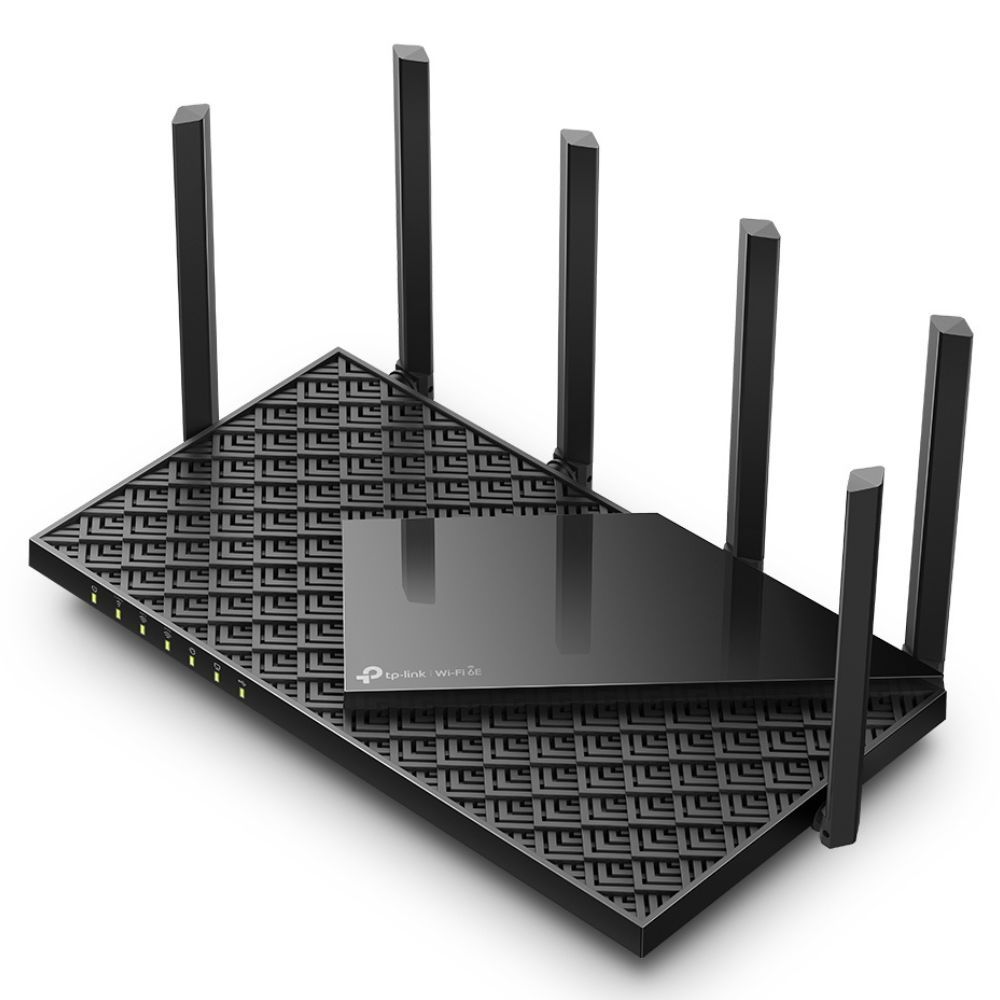
TP-Link Archer AXE75
Stay a step ahead of the curve with a Wi-Fi 6E router
The tri-band TP-Link Archer AXE75 gives you access to a third 6GHz band, which is way less congested than your regular 2.4GHz and 5GHz bands. While Wi-Fi 6E routers are still new, this TP-Link router lets you stay ahead of everybody else and make full use of your phone’s Wi-Fi 6E capabilities.
- Gets you Wi-Fi 6E on a budget
- Can handle gigabit connections
- Six-antenna setup for better coverage
- 6GHz band does not offer the best range
- HomeShield Pro is a paid subscription
The Wi-Fi 6E standard may still be relatively new, but you don’t necessarily need to spend top dollar to access it. With the Archer AXE75, you can have the full tri-band Wi-Fi experience while staying within your budget. But its affordability doesn’t mean it’s lacking in any way. TP-Link has included a respectable quad-core processor and ample RAM for efficient network management.
You will find an array of six external antennae, ensuring excellent reception around your house so that all your smart home devices stay online without a hiccup. And you can expect better speeds with the less congested 6GHz band, which will surely come in handy if you live in an apartment building — but don’t count on the third band to cover a large area. Thankfully, the Archer AXE75 is designed to handle even gigabit internet connections, which is a big deal for a router of this price.
The Archer AXE75 pairs with TP-Link’s easy-to-use and clean Tether app, so you won’t have trouble navigating your way around the app. For certain advanced settings, you will have to use the web interface, but that shouldn’t happen very often. You can manage most of your basic QoS and parental settings from the phone app itself.
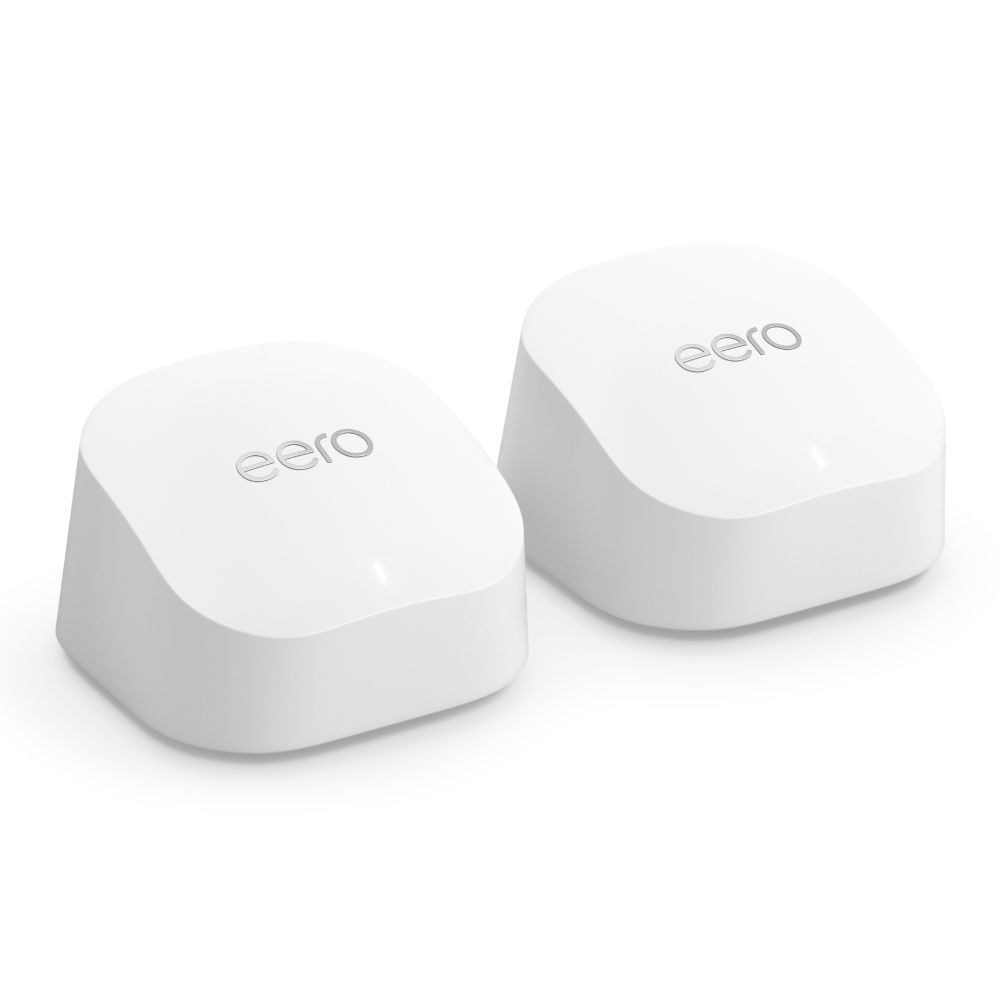
Eero 6+
The more flexible Amazon Eero mesh system
This Plus upgrade for the Amazon Eero 6 range brings you the ability to handle gigabit connections, and each node now comes with a pair of Ethernet ports. This means you can hook wired devices around the house and even connect a switch for even more flexibility.
- Significant network improvements for gigabit connections
- Excellent coverage
- Built-in Zigbee hub
- Many features are tucked behind a paywall
- Noticeable latency when online gaming
The upgraded Eero 6+ takes all the goodies of the previous model and makes the package even better with support for higher wireless speeds. The new Plus model supports up to a 1Gbps connection, double the non-Plus variant. In our testing, the improved network performance on the Eero 6+ was evident on nearly all client devices, though latency in online gaming wasn’t up to the mark. For anything that requires low latency, such as online gaming, you can always use a wired connection, which is now possible as each node on the Eero 6+ comes with two gigabit ports.
As an Amazon product, the Eero 6+ works flawlessly with any Alexa-powered speaker, allowing you to change basic settings with just a voice command. However, you will have to rely on the companion app for most other settings since there’s no web interface as with conventional brands. The app interface is simple and easy to understand, which would help those who aren’t as tech-savvy. Yet, the app irks you by constantly nudging you to take Eero’s premium subscription to unlock additional settings and features.
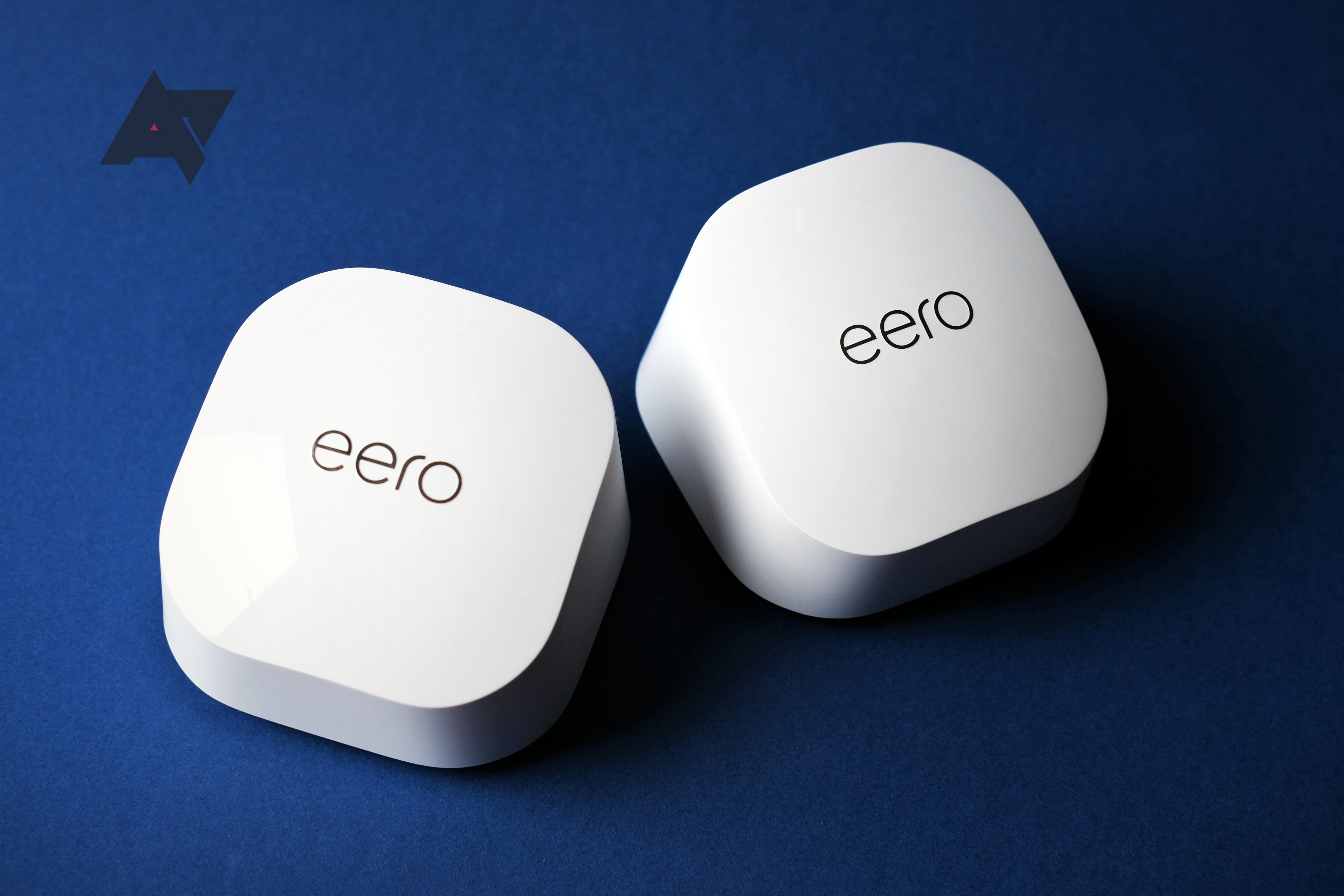
Eero 6+ review: The best entry point for a mesh network
Easy to set up and affordable, the Eero 6+ is a perfect replacement for your ISP’s router
A 3-pack Eero 6+ costs $300 at its full MSRP, which is a tad more expensive than the Eero 6. But that higher price gets you significant performance improvements with gigabit speeds and a 160MHz channel width, making the Eero 6+ well worth its price. In addition, each node has a Zigbee hub built-in, further saving you some cash.
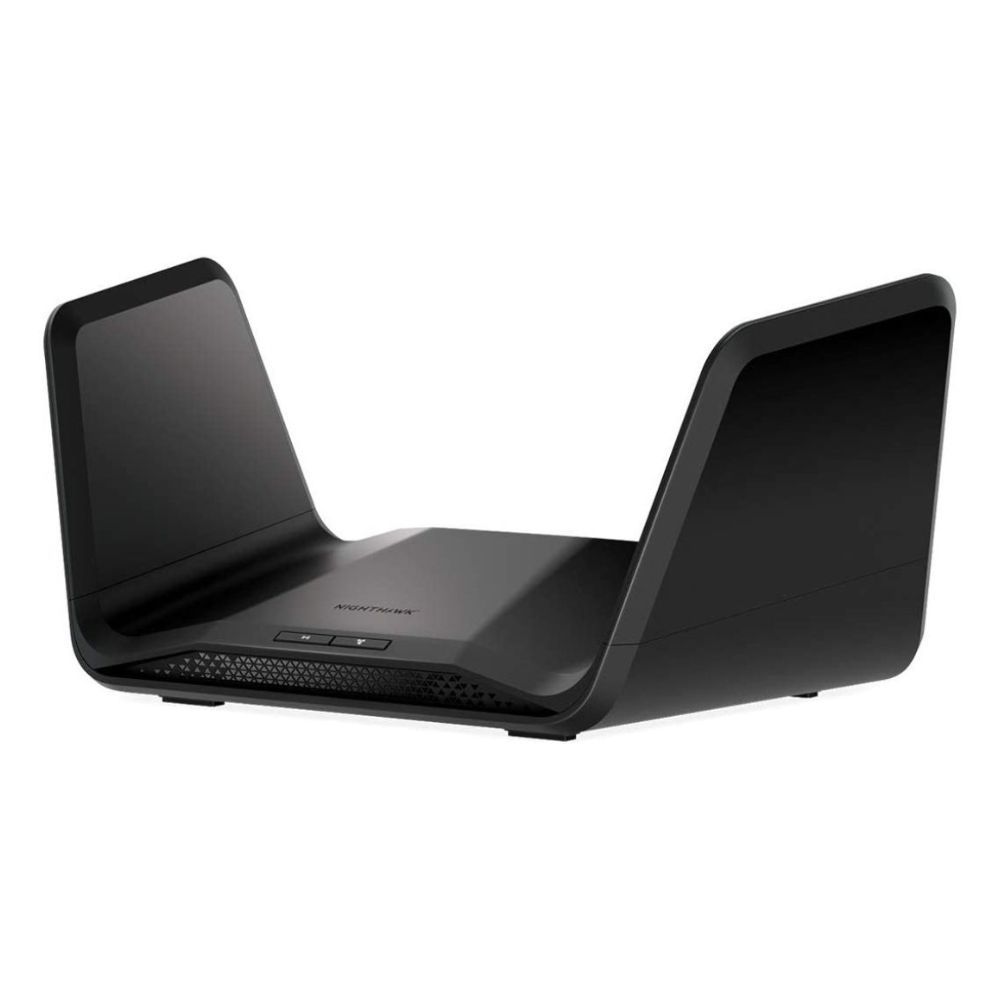
Netgear Nighthawk RAX70
Bring home a spaceship and use it as a router, too
This eye-catching router is packed to the brim with features along with the support for super-fast wireless internet across three bands. Your devices can connect to the most suitable and fastest band, which means connection drops will be a thing of the past during your Zoom calls or online gaming sessions.
- Excellent signal performance and throughput
- Can easily cover a house of about 2,500 square feet
- Packed with all the smarts expected from a modern router
- Many security features require a paid subscription
- Limited number of LAN ports
Do you want a spaceship in your home? You can indeed have one, and it will double up as a top-notch Wi-Fi 6 router! The Nighthawk RAX70 from Netgear draws many eyes with its interesting design, but the router’s network performance really makes it worth it. To let you stream your 8K videos or 4K games without a hitch, this tri-band router uses two 5GHz bands for added throughput. Even its standard 2.4GHz band supports high transfer speeds that can go up to 600Mbps, allowing even your farthest smart gadgets, like garage sensors or backyard sprinklers, to receive good signal strength.
The Nighthawk RAX70 is made for gigabit connections (multi-gig network is supported with port aggregation) and can easily replace your mesh system in a medium to large house, thanks to its high-gain antennae hiding inside those wings. And with eight simultaneous network streams, you won’t have to face slow internet speeds on your phone even if someone is binging a Netflix series in 4K on the living room TV. All this handling is done using a beefy quad-core processor, giving the router ample performance headroom for years to come.
Netgear routers come with a neatly laid out companion app, and it’s pretty easy to find the feature you’re looking for. The Netgear Armor app is powered by Bitdefender and offers robust network tracking and security features such as vulnerability scans and anti-theft protection for all your connected devices. And your kids get a dedicated app to see their allotted time and permissions right on their devices. But as you’d expect, many of these features require a paid subscription, which is becoming the norm with new-age routers.
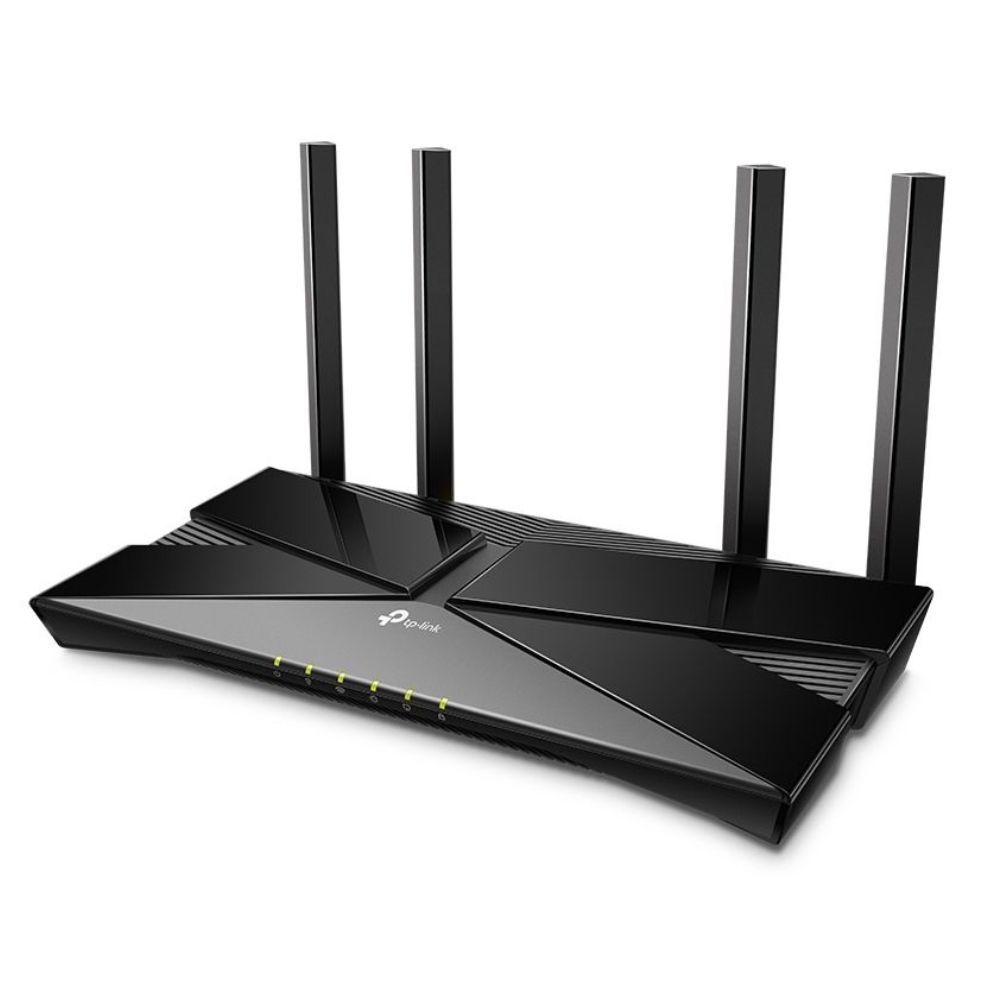
TP-Link Archer AX10
Those on a tight budget cannot go wrong with the Archer AX10
For under $100, you can bring home a perfectly capable Wi-Fi 6 router with advanced features such as voice control with Alexa, OFDMA, and MU-MIMO. And with those external antennae, signal reception won’t be a problem at all in your apartment, even if you have tens of connected devices.
- Management is easy with Tether app
- OneMesh support
- Several advanced connectivity features
- Only basic parental & QoS controls
- No USB port
If you don’t want to spend a lot on a router or want something basic, say for a small apartment, the TP-Link Archer AX20 meets those needs. A lower-end trim of our best-value pick, the AX20 borrows many features, like app support, MU-MIMO, beamforming, and some basic QoS and parental controls from the AX50. On top of that, it gets OneMesh and WPA3 support, which the AX50 lacks. TP-Link has outfitted this router with a capable processor and memory configuration, which should be more than enough for connecting tens of smart home devices at once.
As for the range, you can expect a strong performance on both bands, though don’t bank on it to cover every corner of a large home. If you aren’t expecting a lot from the Archer AX10 in terms of coverage, it’s a terrific Wi-Fi 6 router for the price. It’s an AX1500 router, so it can technically handle gigabit connections, but the speeds will fall off quickly as you move further. This router works better with your basic internet connections up to 300Mbps, where the speed drop won’t be as dramatic.
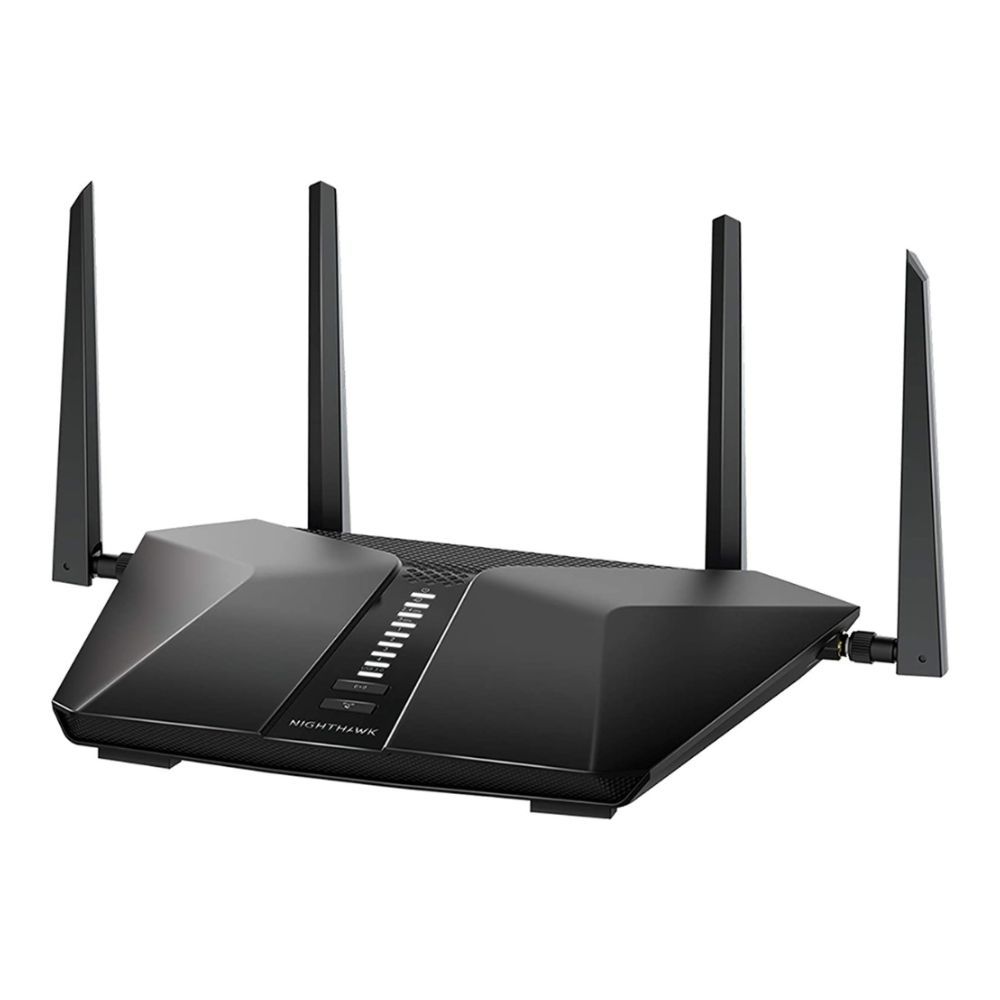
Netgear Nighthawk RAX43
Perfect fit for high-speed internet in an apartment
The Netgear Nighthawk RAX43 is made for a range of 2,000 square feet, but it can deliver gigabit-class speeds within that range. Plus, it can just as easily handle your gaming as it does your online work needs. And unlike many other routers, the Nighthawk RAX43 works with both Google Assistant and Alexa.
- Reliable signal performance in the suggested range
- Speeds are good even on the 2.4GHz band
- Works with Google Assistant and Alexa
- Netgear app does not offer the smoothest setup process
- Subscription required for advanced security features
You can easily get by without any of the best mesh routers in a house or an apartment under 2,000 square feet, but you will need a solid standalone router like the Netgear Nighthawk RAX43. This mid-tier router from one of the most trusted networking brands takes in a gigabit internet connection and maintains a strong signal throughout your house using its four external antennae.
From the initial setup on the web to handling device configuration from a modern companion app, things work seamlessly across the board (the setup process on the app could use some work, though). In addition, it is compatible with both Alexa and Google Assistant, so it can easily integrate with either smart home ecosystem. However, Netgear requires you to pay a monthly fee if you want to access advanced security and parental controls after a 30-day trial.
Speaking of smart homes, the Nighthawk RAX43 can handle over two dozen connected devices simultaneously, enough for an average home. It supports Beamforming+ on both bands for a better signal-to-noise ratio on compatible client devices. And if you want to hook your gaming PC or Nvidia Shield over LAN, you can do so with four gigabit ports.
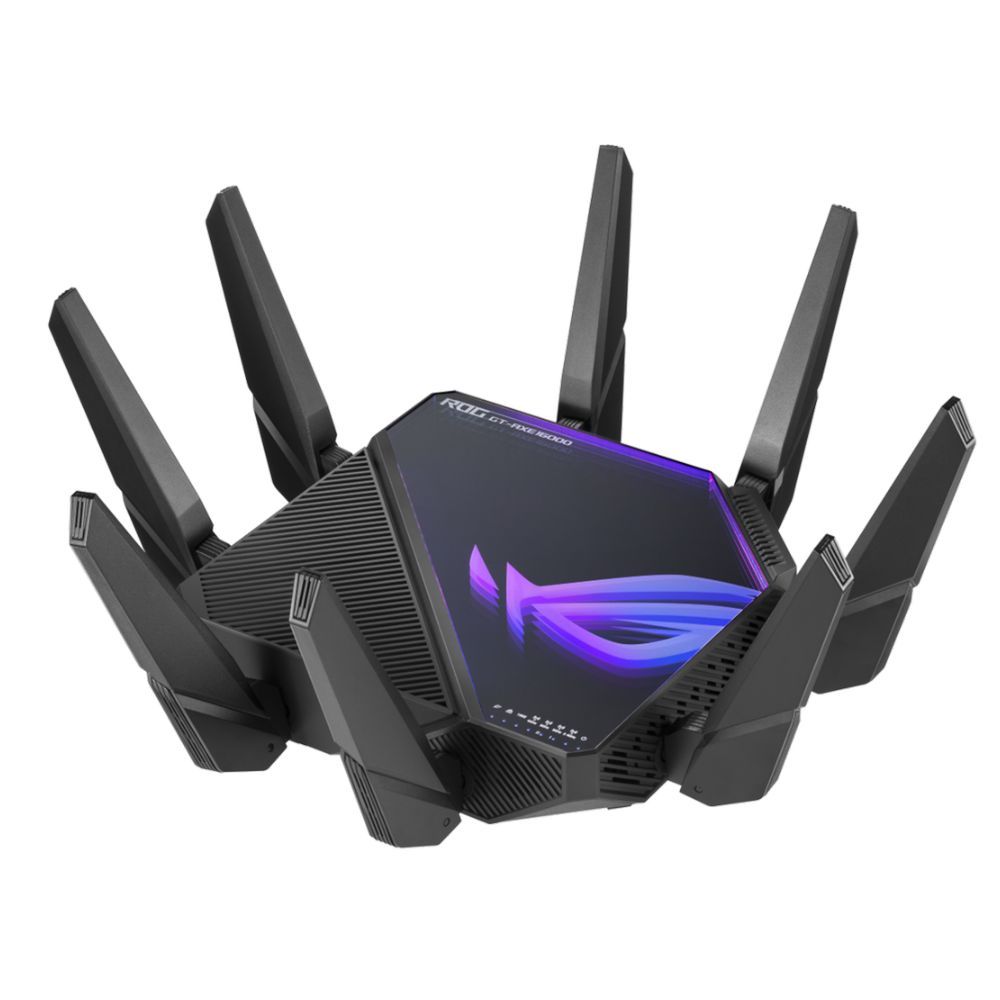
ASUS ROG Rapture GT-AXE16000
It doesn’t get better than this for those eyeing a standalone router
This ROG-branded router is made for gaming, and it’s the best you can do when it comes to routers. With a multi-gig internet connection and this quad-band router, you can have a truly remarkable Wi-Fi experience across your home. More notably, you can use the 10GbE port to make your wired connections even faster and more reliable.
- Blazing-fast internet speeds
- Game acceleration features
- Offers two 10GbE ports
- Super expensive
- AiProtection sometimes interferes with the speed
The ROG Rapture GT-AXE16000 is absolutely a beast of a router, considering what it packs on the inside. There are a total of 12 antennae — eight on the outside and four on the inside. What powers everything up is a quad-core processor paired with 2GB of RAM; it is basically a mini computer disguised as a router.
Thanks to all those hefty internals, the router comes with good performance as well. It is a quad-band router with two 5GHz bands, one 2.4GHz band, and one 6GHz band. The best part is that you can use either the 5GHz or the 6GHz band for backhaul in an AiMesh setup. With the latter, it would be particularly helpful since the 6GHz band is a lot less congested, giving you a more stable backhaul between two compatible mesh routers.
Along with all other benefits of Asus routers, like the bundled security suite, you also get a pair of 10GbE LAN ports, allowing you to hook your NAS for full-speed transfers. However, it’s worth noting that some AiProtection features are known to interfere with the internet speed from the router, but that isn’t something Asus cannot fix with a software update.

Google Nest Wifi Pro
Perfect addition to smart homes with Nest devices controlled by Google Assistant
Google’s latest Nest Wifi Pro is a tri-band Wi-Fi 6E router that is easy to set up right from the Google Home app and integrates easily with your Google Assistant-powered smart home. It comes with a ton of smart features that you don’t need to pay separately for, and it’s future-proof, too, with support for Matter and Thread.
- Wi-Fi 6E performance is solid
- Easy to set up and plenty of smarts for network optimizations
- Thread and Matter support for future-proofing
- Limited port selection
- Lags behind competition in terms of malware protection
While Google has had mesh routers for quite a while now, it stayed behind the curve without a Wi-Fi 6 offering. So the company jumped straight to the newer Wi-Fi 6E standard with the Nest Wi-Fi Pro, making it one of the market’s more affordable Wi-Fi 6E mesh systems. While the third 6GHz band brings fantastic internet speeds to your compatible phones, the wide coverage of these mesh routers — with each node covering 2,200 square feet — makes the News Wi-Fi Pro an ideal choice for large homes with many connected devices.
The Nest Wi-Fi Pro’s biggest strength is its compatibility with the Google ecosystem. From the get-go, you don’t need a separate app to set up and manage the routers; all you need is the Google Home app, which comes pre-installed on all Android devices. It works with your Nest speakers, and Google says that the router prioritizes Nest smart home devices like doorbells and cameras for better network performance. Another unique perk of Google products is that you get to pick the router from a bunch of nice colors instead of the mundane black and white. Aesthetics matter a lot for mesh routers that need to be placed around the house.
Not a lot of routers are as future-proof as the Nest Wi-Fi Pro. This Google mesh system supports Matter and Thread out of the box, allowing it to easily connect with your compatible devices without a hub. However, we wish the router supported more than 1Gbps connections and had additional LAN ports on each node for additional flexibility with wired connections.
How to get the best Wi-Fi 6 router for your home
While buying a router for your place, it’s important to keep in mind that one size doesn’t fit all — a router that is perfect for your friend may not be suitable for your house. For instance, you can easily get away with a cheap, standalone router if you want something for your small apartment. But for larger homes, you’d be better off investing in one of the best Wi-Fi 6 mesh systems, which is especially true if you plan on adding more satellite units down the line to expand the coverage, maybe to another floor or that dark spot in your garage.
You will find that some standalone routers also support their proprietary mesh technology, allowing you to add the same or other compatible routers from the company to the mix. While it is still convenient, depending on the kind of router you’re eyeing, you may end up paying more than a dedicated mesh system. Besides that, a few high-end routers also come with multiple high-gain external antennae that can cover a large area with a strong signal across both bands, which could also be an option for some users.
One important thing that you should consider in addition to the coverage area is the number of connected devices you have at your place. In our modern homes with tens of smart devices, a router can make or break your everyday experience. Most users will easily get away even with the budget options on the list, but if you have around a couple of dozen connected devices, your experience would be much better on a mid-tier or a high-end router. For anything more, mesh systems are your best bet as they can handle multiple client devices per node.
This becomes particularly crucial if you have multiple high-bandwidth devices. While your smart lights, plugs, and vacuum cleaners don’t hog the bandwidth, devices like your 4K TVs, gaming consoles, and uses like downloading or uploading large files over the internet (or even local network) do stress the router. Higher-end routers and mesh systems are better suited for homes with more of these demanding devices. These routers not only support a greater number of concurrent connections but can also smartly allocate the bandwidth to your devices that need it the most.
Which Wi-Fi 6 router should you get?
Our handpicked routers here are some of the best ones on the market right now, and you can simply pick one of them based on your budget and the kind of coverage you want. There are some super-premium routers like the ASUS ROG Rapture GT-AXE16000, which is at the cutting edge of Wi-Fi 6 routers and perfect for most use cases, provided you have the budget for it. On the other end of the spectrum, there are a couple of excellent budget options that don’t cost more than $100 and offer a ton of smart features that you get from more premium options.
However, the sweet spot lies in the middle, around the $250 mark. This is where you will get the best value for your money, while still getting the most features you can ask for from a router. While your router options are excellent in this price bracket, there are even a few mesh systems that can bring a solid upgrade to your home network and offer better coverage across all corners of your house.
Even our top pick, the Asus RT-AX86U Pro, falls in the same price bracket and should be perfect for most houses. It is among the best routers available right now, and it comes loaded with features that you will typically find only on pricier models. One key area where Asus beats all other brands is that you get free lifetime access to the premium features in Asus’ protection suite, something that other companies usually charge a monthly fee for.

Asus RT-AX86U Pro
Just the right router for your gigabit connection
The Pro upgrade for Asus’s popular RT-AX86U comes with all the bells and whistles you can ask for from a modern router and then some. It can easily handle your gigabit internet connections, and Asus bundles its security suite with the router without any extra monthly fee.




